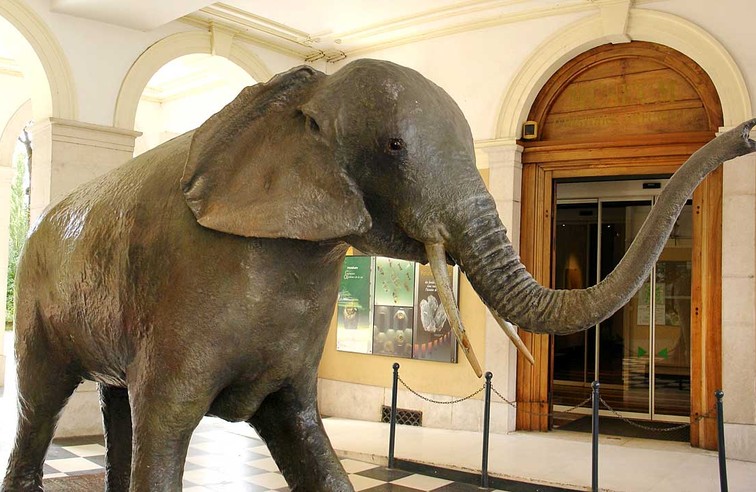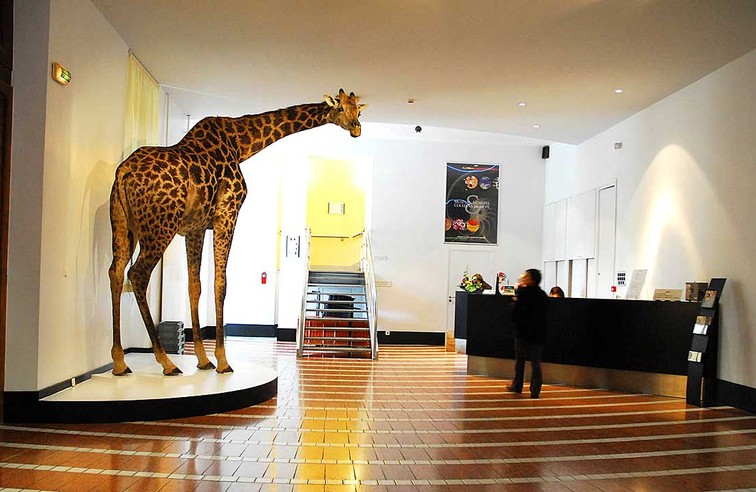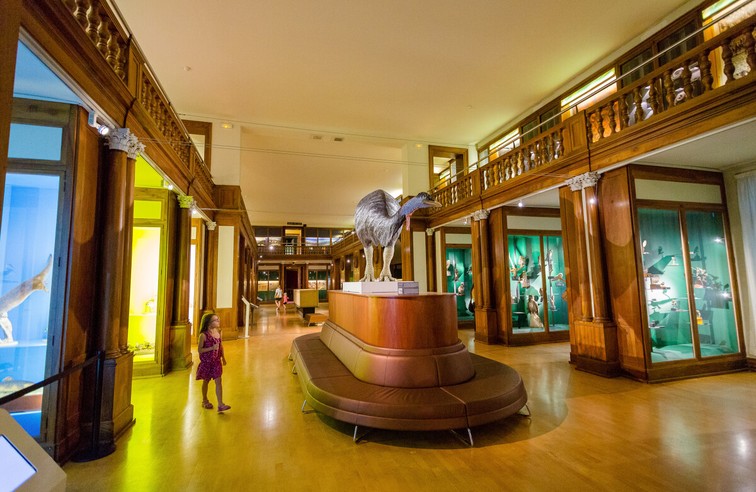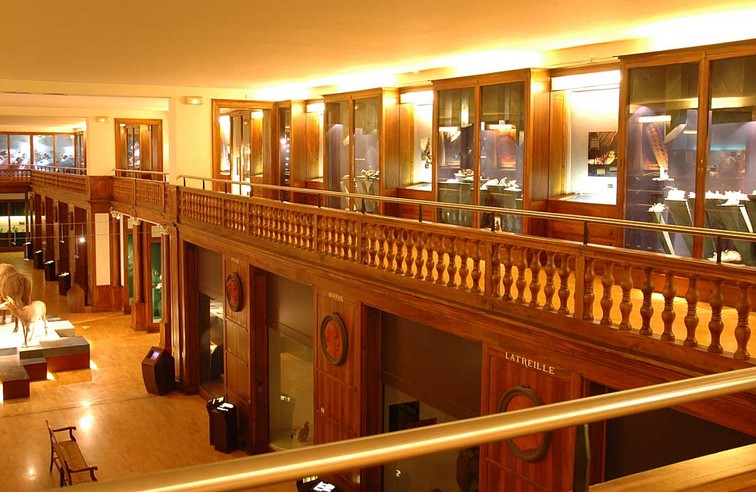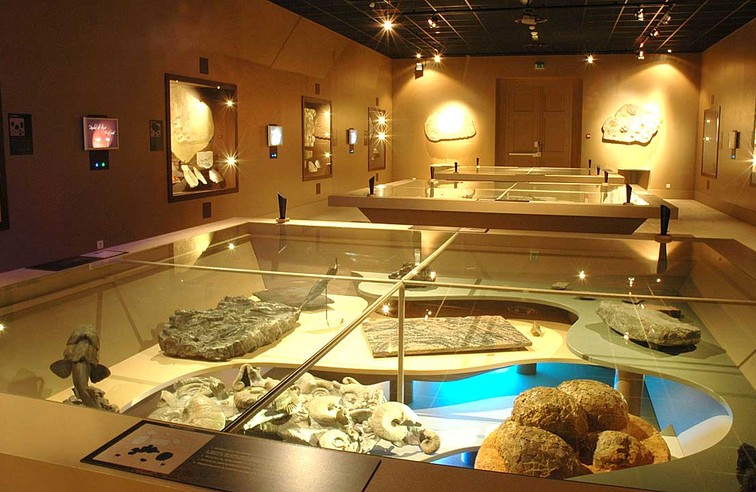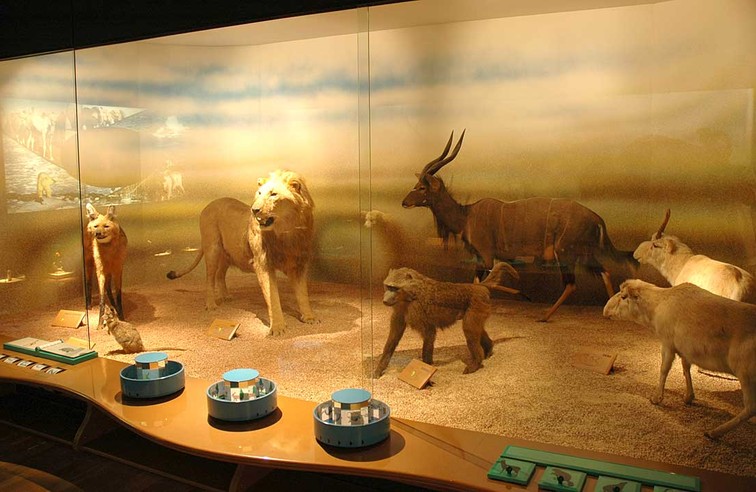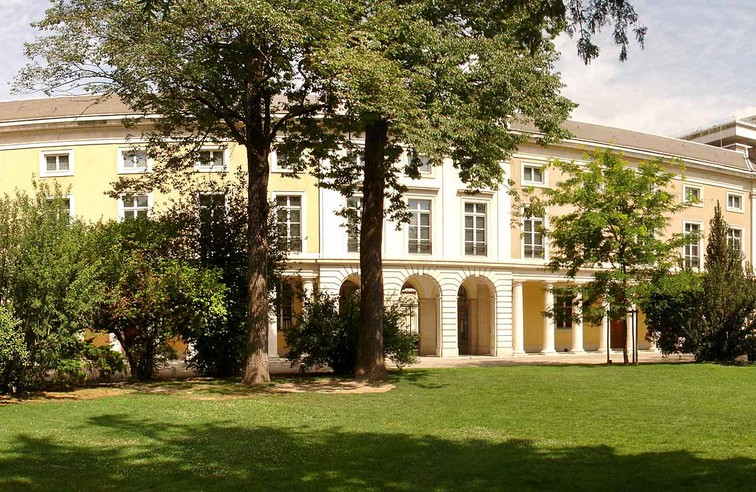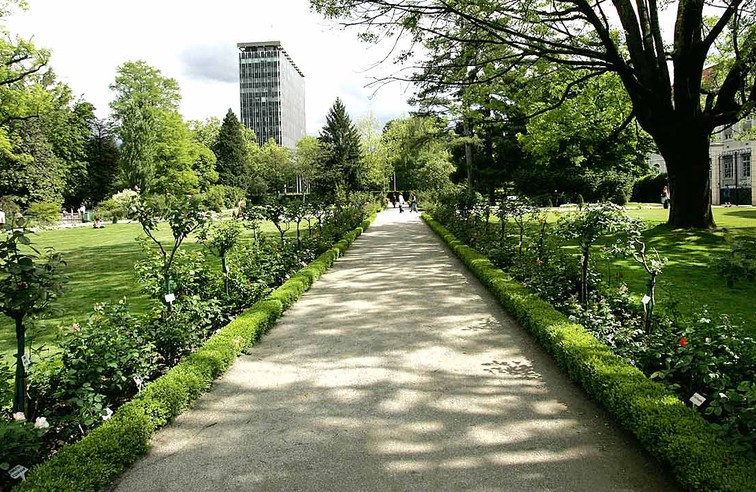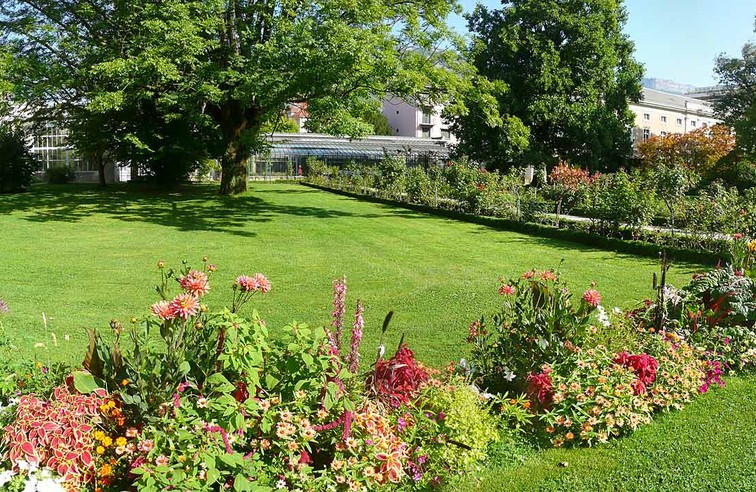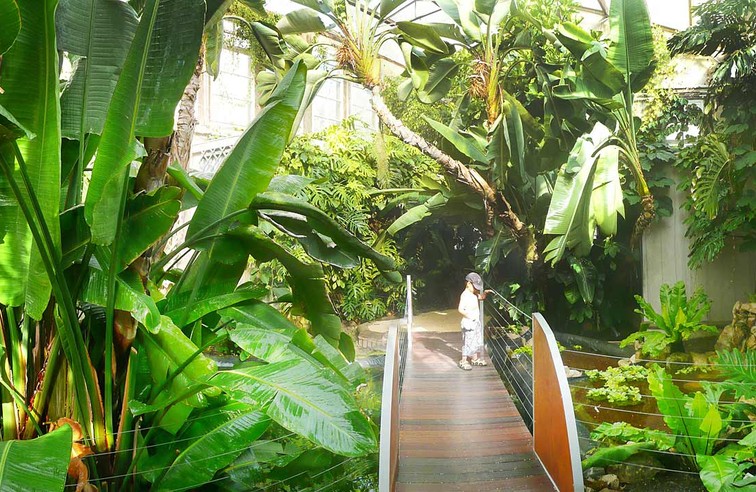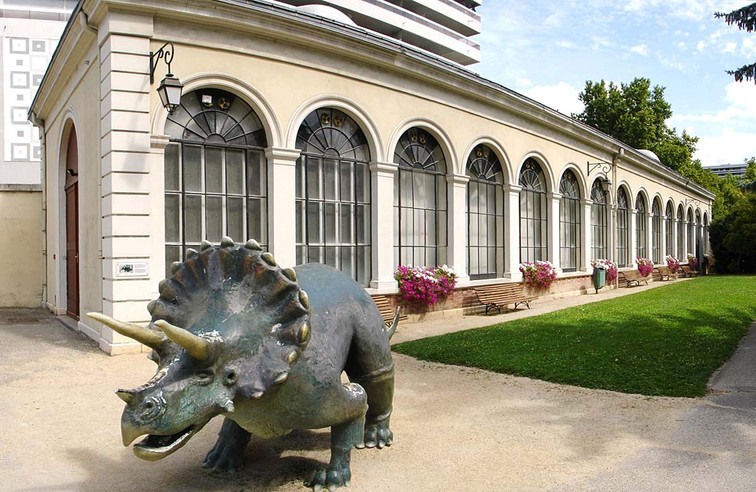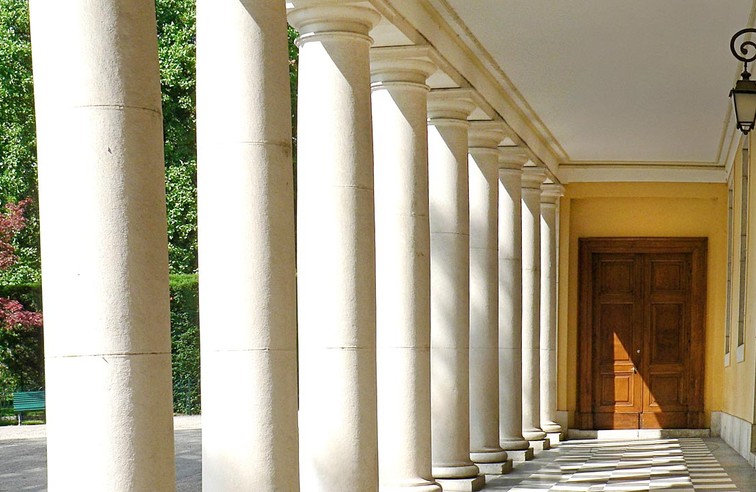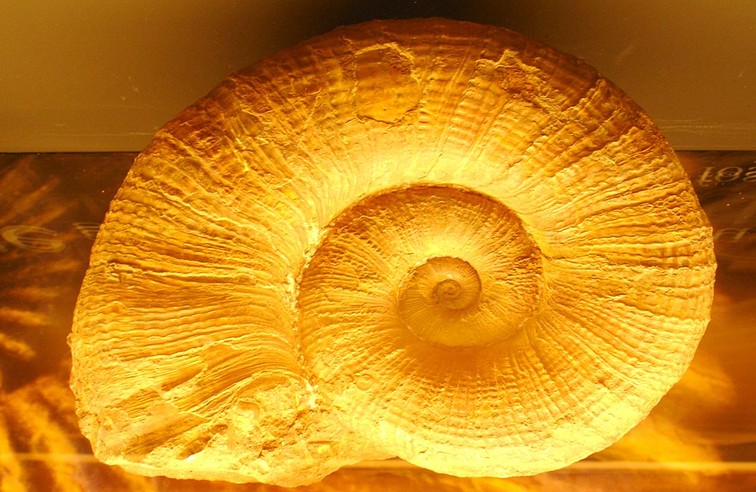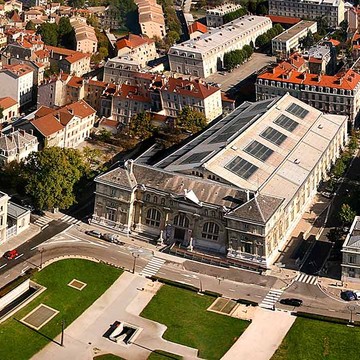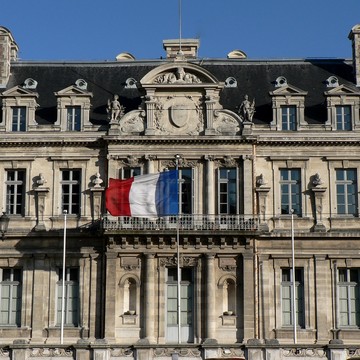Muséum de Grenoble

Founded in the XIXth centuruty, in the vegetal shelter of the Jardin des Plantes, the Museum of Grenoble is nowadays a space when you will be able to meet, to be welcomed and to share knowledge on the Sciences of Human, Life and Earth. An experiment to be shared with your family !
Weiterlesen Voir moins
The Museum collections are evenly used during permanent or temporary exhibitions, and are declined in several animations: workshops, films, lectures, debates...
With 6 available rooms, the Museum of Natural History of Grenoble, is for its visitors, a space of conservation and presentation of the natural inheritance, and a remarkable spot of diffusion of scientific knowledge.
> Room of the Living Mountain:
This room was designed to serve as a genuine meeting place with the natural world and the different animal species, a place to visit before or after an excursion into the actual natural world, to compare one's impressions on-site with the museum's specimens. The room is hardly stagnant, closed to the outside world. It is rather a dynamic exhibit, open to the Alpine world where one can explore the natural diversity from diaporama to diaporama.
>Crystal Symphonie Room :
This 13 faceted cavern presents the visitor with a curious and marvellous invitation into the crystal world. Mineral from some of the world's largest mineralogical sites are presented. Unusual shapes and colors make visitors wonder just how such creations were formed.
> Atlas Room:
"You can see, feel, hear, and turn the pages of the giant book of the planet."
The interactive element of this room seeks to spark children's curiosity.
The various games in front of the display windows create a strong interaction between the youngest visitors, their parents, and the objects presented.
Here, one can see, hear, and touch all at the same time.
Two different environments, along with the mammals that inhabit them, are there to marvel visitors: a temperate forest, and an African savannah.
> Birth of the Alps:
What were the Alps like before? This near permanent exhibit was recently renovated and allows visitors to situate and understand the formation of the Alps in the context of the Earth's long history. From window to window, the visit begins in the Archean era and moves through geological time towards the Quaternary era.
> Alpine mineralogical sites
The Dauphiné mountains most typical specimens and the crystal discoveries from the Alps' most famous mines are presented here.
> In the Earth's own words
The evolution of life as told by exceptional fossils. 101 original pieces, from some of the world's largest fossil sites, are displayed in this new room.
A sober, contemporary museography, thought out for the most diverse audience possible, where the furniture and the use of space suggest the indispensable mapping grid so dear to professional archeologists. The layout highlights the beauty of the objects, the evocative strength of the fossils, still embedded in their gangue.
> The Botanical Garden
A magnificent garden belonging to the Natural History Museum, the garden presents rare trees, 300 m2 of botanical greenhouses, 700m2 of winter gardens, for a total of 20,000 m2.
The first botanical garden of Grenoble was founded in 1782. It was re-established in 1842 on a plot of land purchased by the city, between the rue Haxo and the rue Chanrion.
Parking mini-bus pour personne à mobilité réduite.
Dépose site pour les groupes
3 sanitaires sur le site, dont 2 pour personnes à mobilité réduite
Groupe d'enfants : mini 10 / maxi 30
Pas de difficulté de cheminement particulière.
Visites guidées et animations pédagogiques pour les groupes constitués.
Dossiers pédagogiques pour les enseignants, mallettes pédagogiques.
Preise
Zahlungsmittel- Bar
- Kreditkarte
- Pass’Région
- Scheck
Kostenlos.
Öffnungsperioden
Vom 01/01 bis 31/12
Öffnungszeiten jeden Dienstag, Mittwoch, Donnerstag und Freitag von 9.15 Uhr bis 12 Uhr und von 13.30 Uhr bis 18 Uhr. Jeden Samstag und Sonntag von 14 Uhr bis 18 Uhr.
Montag geschlossen.
Ausnahmsweise geschlossen am 1. Januar, 1. Mai und 25. Dezember.
Ausrüstung und Eigenschaften
- Abgelehnte Tiere
- Parkplatz in der Nähe
- Zugänglich mit Rollstuhl ohne Hilfe
Zufahrt
Transports en commun : tramway A, arrêt Verdun Préfecture ou tramway C, arrêt Hôtel-de-Ville
Bus ligne 15 arrêt Bir Hakeim
- Breite: 45.187573
- Länge: 5.735148
Umgebung
- In der Stadt
- Stadtzentrum
- In Nähe einer Bushaltestelle
